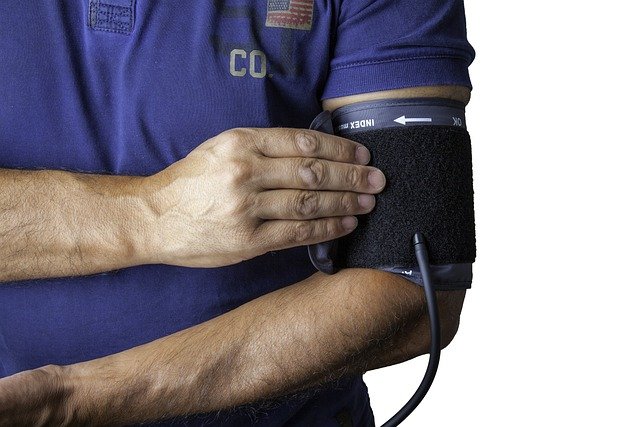Tardive dyskinesia: an overlooked side effect of long-term medication
Certain long-term medications may cause tardive dyskinesia, which is characterized by involuntary movements of the face, lips, tongue, or limbs. This condition is often overlooked, but early identification and intervention may help improve symptoms. Common manifestations include involuntary twitching or grimacing of the face, involuntary movement of the tongue in the mouth, etc. Some new treatment options may help improve symptoms.

What medications causes tardive dyskinesia and how to treat it?
Several categories of medications can trigger tardive dyskinesia, with antipsychotic drugs being the most common culprits. Traditional antipsychotics like haloperidol, chlorpromazine, and fluphenazine carry the highest risk, though newer atypical antipsychotics such as risperidone and olanzapine can also cause the condition. Anti-nausea medications including metoclopramide and prochlorperazine are frequently overlooked causes, especially when used long-term for digestive issues.
Treatment approaches vary depending on severity and individual circumstances. The first step often involves discontinuing or reducing the offending medication when medically feasible, though this must be done carefully under medical supervision. VMAT2 inhibitors like valbenazine and deutetrabenazine have shown promising results in clinical trials, specifically designed to treat tardive dyskinesia symptoms by regulating dopamine levels in the brain.
Tardive dyskinesia the signs and symptoms to recognize
The hallmark symptoms of tardive dyskinesia involve repetitive, involuntary movements that typically affect the face, mouth, and tongue initially. Patients may experience lip smacking, tongue protrusion, facial grimacing, or rapid blinking. These movements often occur in a rhythmic pattern and worsen during stress or emotional situations.
As the condition progresses, symptoms may extend to other body parts. Choreiform movements of the fingers, hands, and arms are common, along with rocking motions of the trunk or pelvis. Some individuals develop respiratory irregularities or difficulty swallowing. Unlike other movement disorders, tardive dyskinesia symptoms typically persist even when the person is at rest and may temporarily improve with voluntary movement.
Symptoms of tardive dyskinesia in female patients
Research indicates that female patients may experience tardive dyskinesia differently than their male counterparts. Women, particularly those over 55, appear to have a higher risk of developing the condition, possibly due to hormonal factors and differences in medication metabolism. Estrogen levels may influence dopamine sensitivity, potentially affecting both the development and severity of symptoms.
Female patients often report that symptoms fluctuate with their menstrual cycle or menopause status. Facial and oral movements tend to be more prominent in women, while men more commonly develop limb and trunk movements. Additionally, women may experience more severe social and emotional impacts due to the visible nature of orofacial symptoms, leading to increased anxiety and social withdrawal.
How long does it take for tardive dyskinesia to develop?
The timeline for tardive dyskinesia development varies significantly among individuals, but certain patterns have emerged from clinical research. Most cases develop after at least three to six months of continuous antipsychotic use, though some patients may develop symptoms within weeks of starting treatment. Older adults face higher risk and may develop symptoms more rapidly than younger patients.
Several factors influence development speed, including medication dosage, individual genetic susceptibility, and concurrent medical conditions. Diabetes, brain injury, and substance abuse history may accelerate onset. Interestingly, symptoms may not appear until weeks or months after discontinuing the causative medication, making diagnosis challenging. Regular monitoring through standardized assessment tools like the AIMS scale helps detect early signs before they become severe.
Advanced treatment options available in the United States
The United States has seen significant advances in tardive dyskinesia treatment options over recent years. Beyond VMAT2 inhibitors, several innovative approaches show promise. Deep brain stimulation has demonstrated effectiveness in severe cases that don’t respond to medication. Botulinum toxin injections can provide targeted relief for specific muscle groups, particularly effective for focal symptoms.
Clinical trials are exploring novel therapeutic approaches, including antioxidant treatments, neuroprotective agents, and advanced neurostimulation techniques. Telemedicine platforms have also expanded access to specialized movement disorder clinics, particularly beneficial for patients in rural areas. Many academic medical centers now offer comprehensive tardive dyskinesia programs that combine medication management, physical therapy, and psychological support to address the condition holistically.
Understanding treatment costs and provider options
Treatment costs for tardive dyskinesia vary significantly based on the chosen approach and insurance coverage. VMAT2 inhibitors typically cost between $6,000 to $8,000 monthly without insurance, though patient assistance programs may reduce out-of-pocket expenses considerably.
| Treatment Option | Provider Type | Monthly Cost Range |
|---|---|---|
| VMAT2 Inhibitors | Neurologist/Psychiatrist | $6,000-$8,000 |
| Botulinum Toxin | Movement Disorder Specialist | $300-$800 per session |
| Deep Brain Stimulation | Neurosurgical Center | $50,000-$100,000 total |
| Comprehensive Care Programs | Academic Medical Centers | $200-$500 per visit |
Insurance coverage varies widely, with Medicare and most private insurers covering FDA-approved treatments after prior authorization. Many pharmaceutical companies offer patient assistance programs that can reduce costs significantly for qualifying individuals.
Prices, rates, or cost estimates mentioned in this article are based on the latest available information but may change over time. Independent research is advised before making financial decisions.
Living with tardive dyskinesia: management strategies
Managing tardive dyskinesia extends beyond medical treatment to encompass lifestyle modifications and supportive care. Stress reduction techniques, including meditation and regular exercise, may help minimize symptom severity. Occupational therapy can provide practical strategies for daily activities, while speech therapy addresses swallowing difficulties and communication challenges.
Support groups, both in-person and online, offer valuable connections with others facing similar challenges. Many patients benefit from working with social workers who understand disability benefits and workplace accommodations. The key to successful management lies in early intervention, consistent medical care, and a comprehensive approach that addresses both physical symptoms and emotional well-being.
This article is for informational purposes only and should not be considered medical advice. Please consult a qualified healthcare professional for personalized guidance and treatment.




